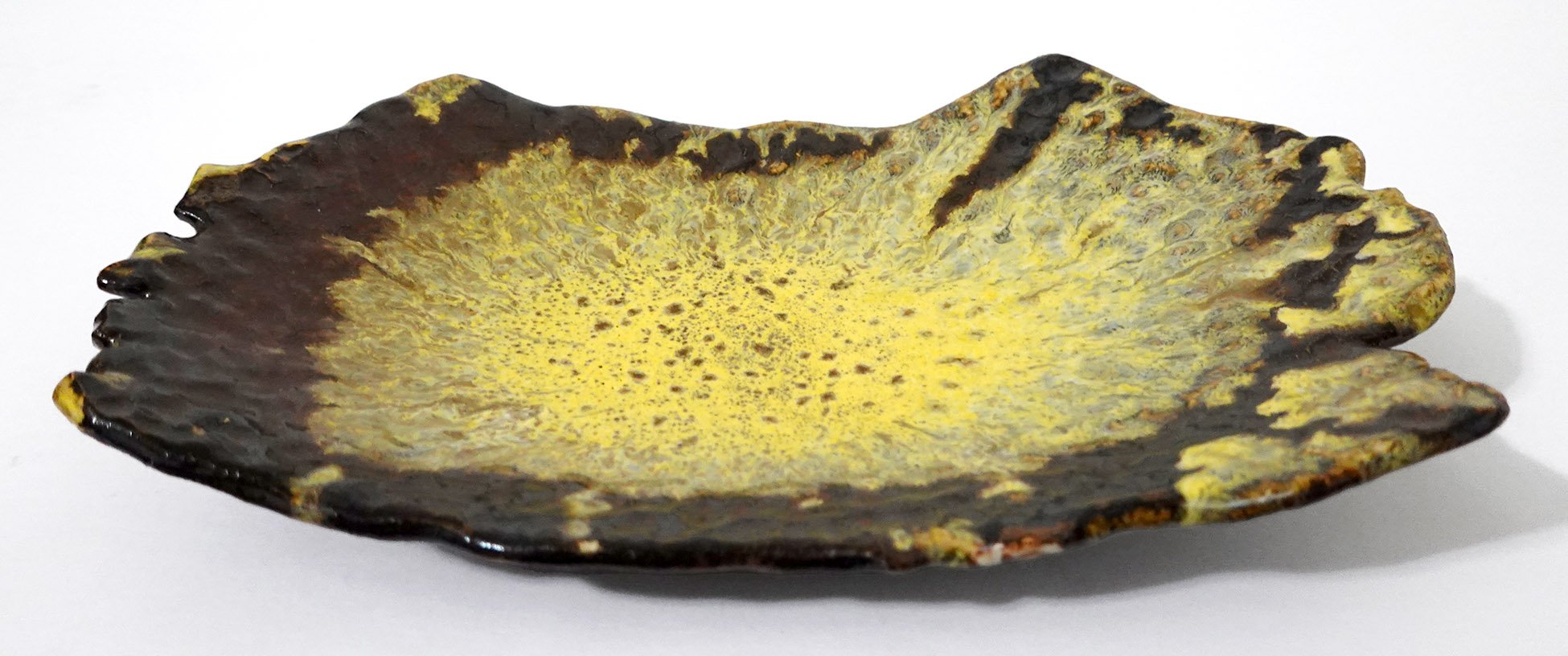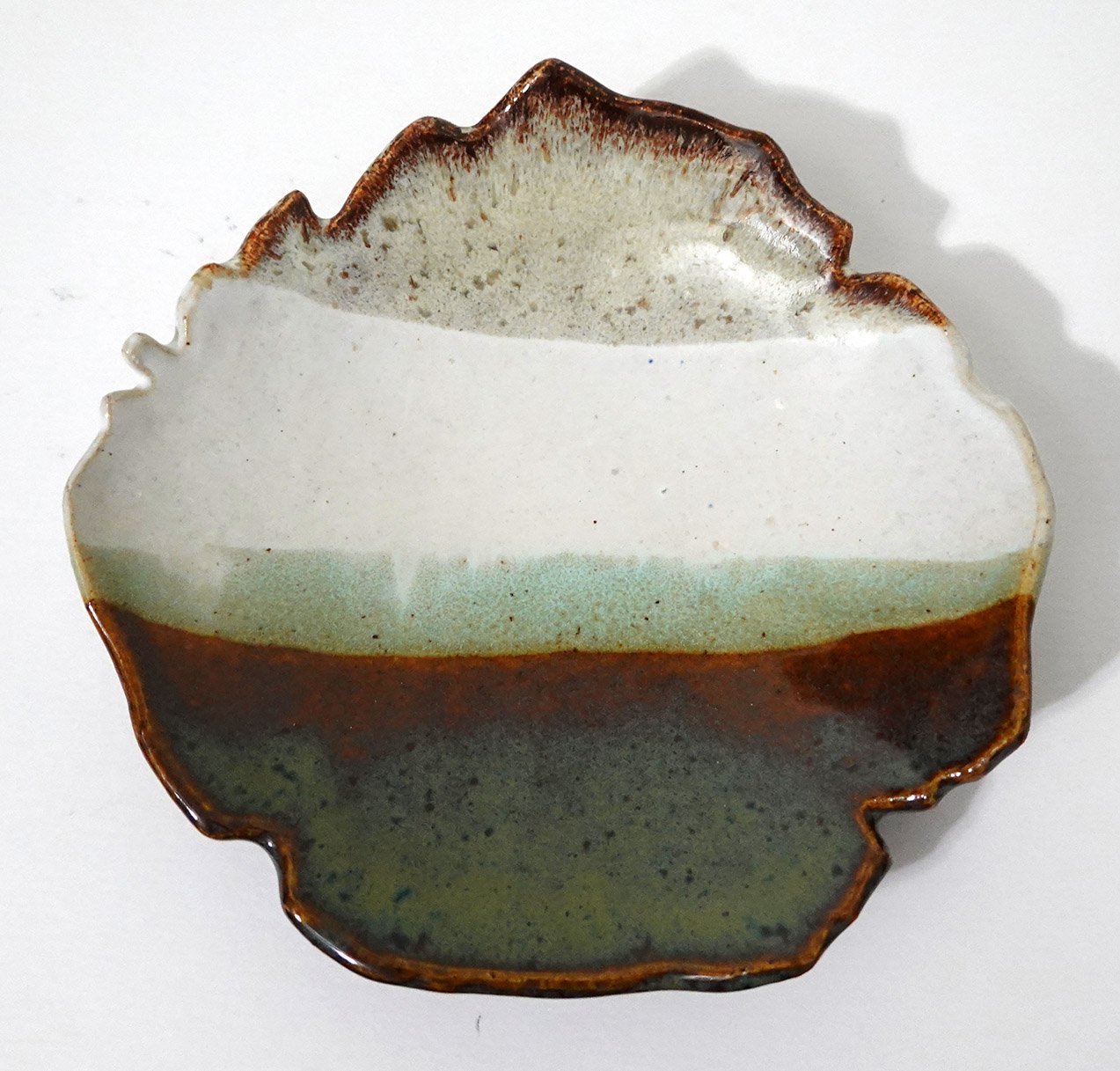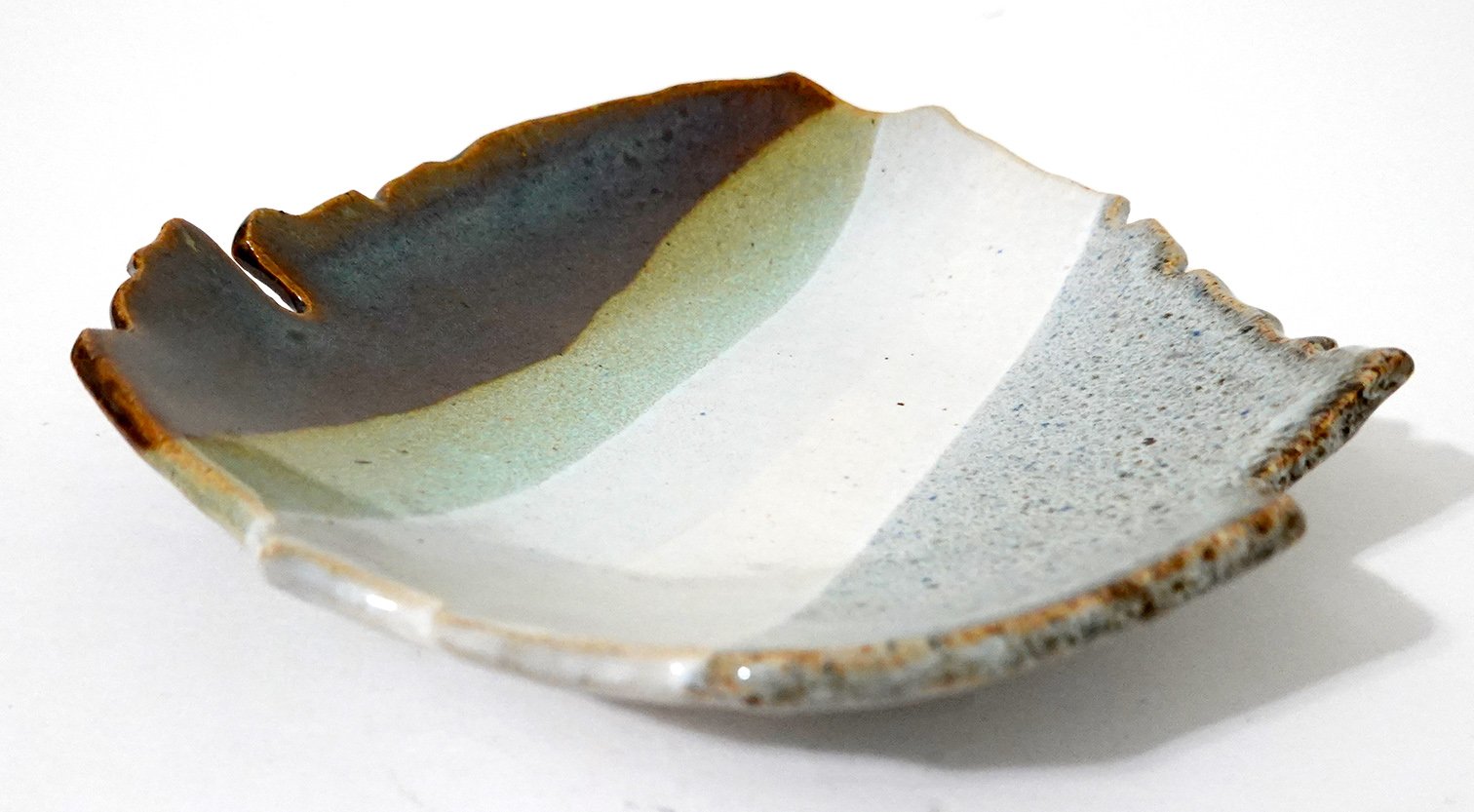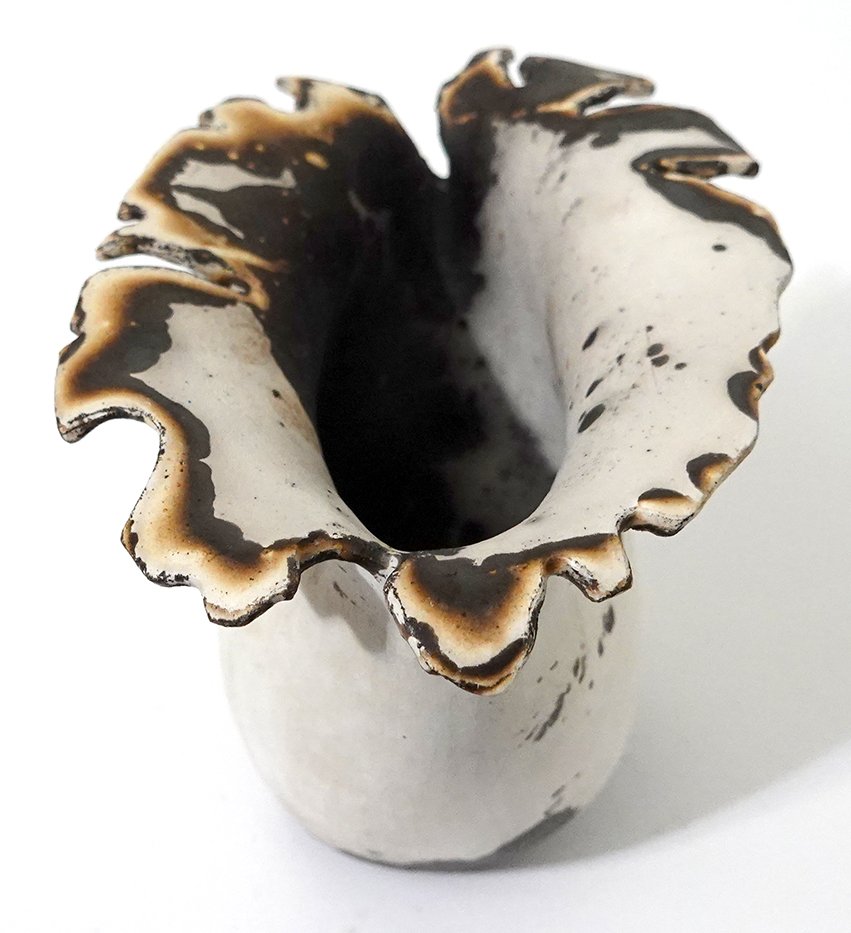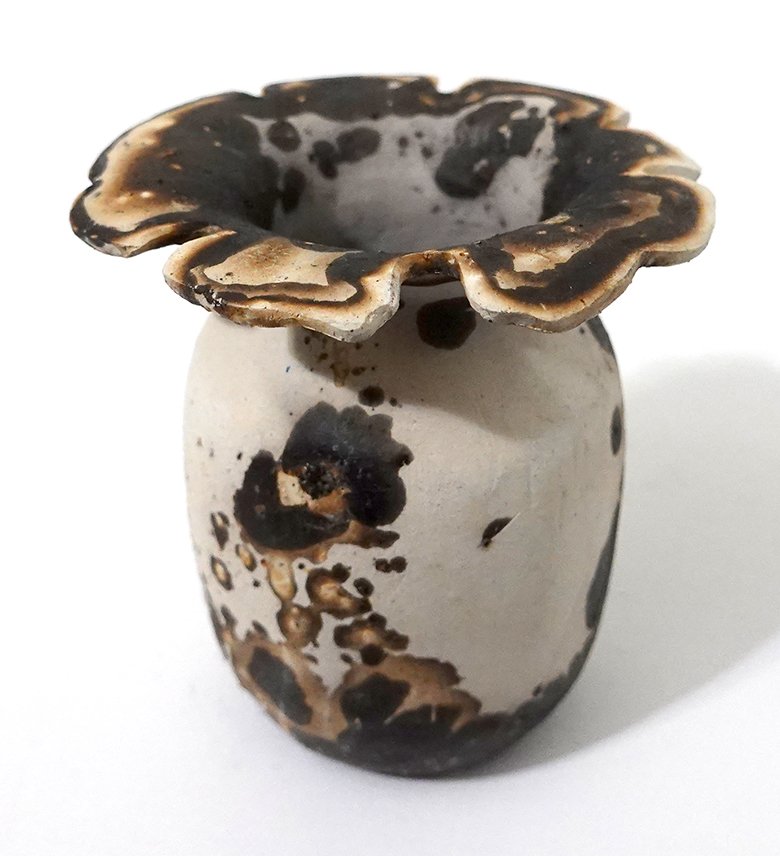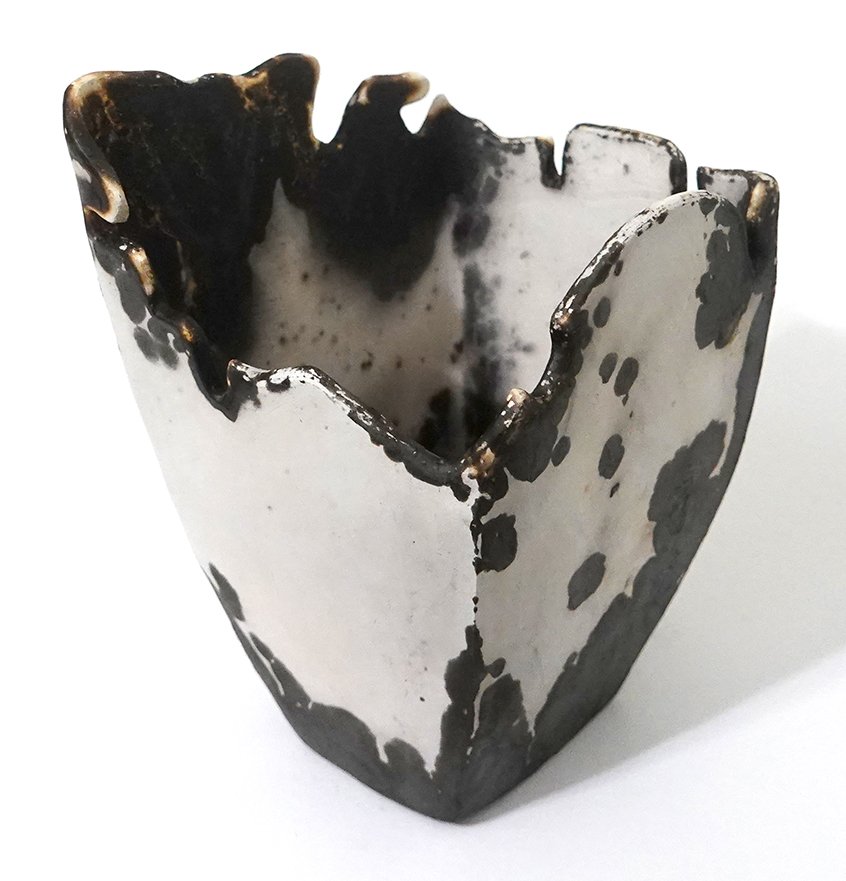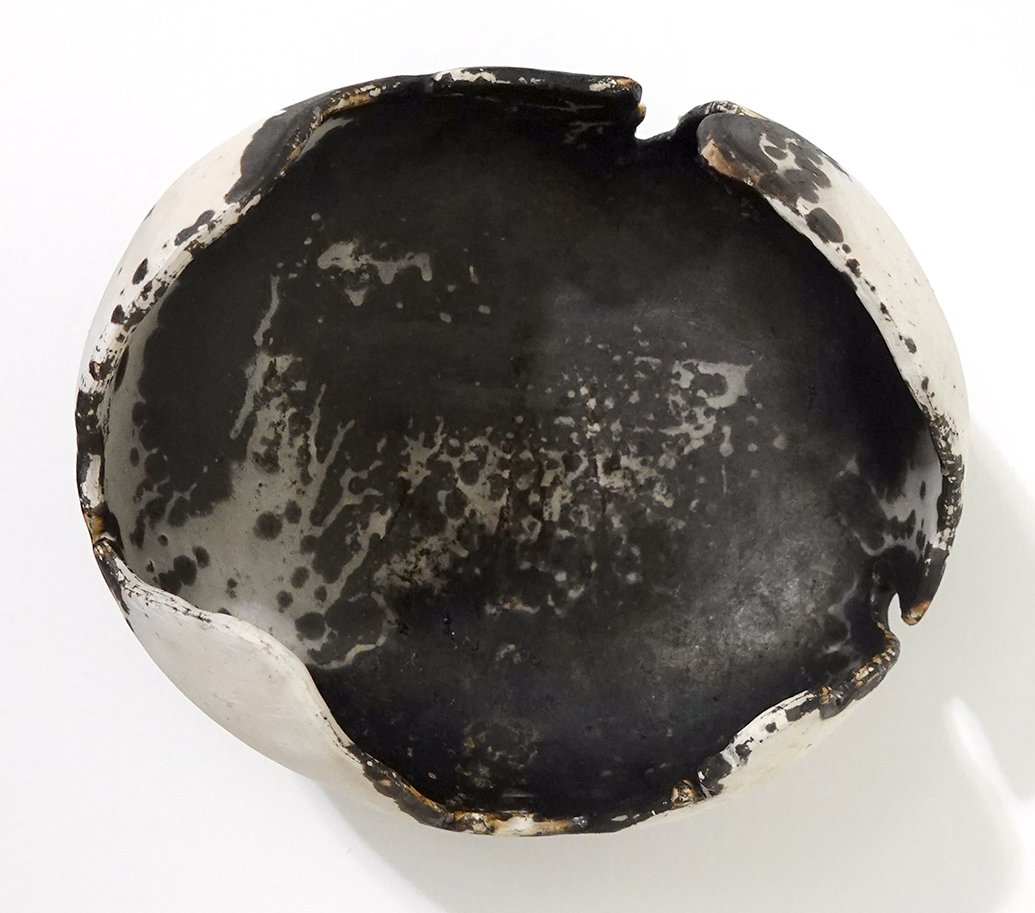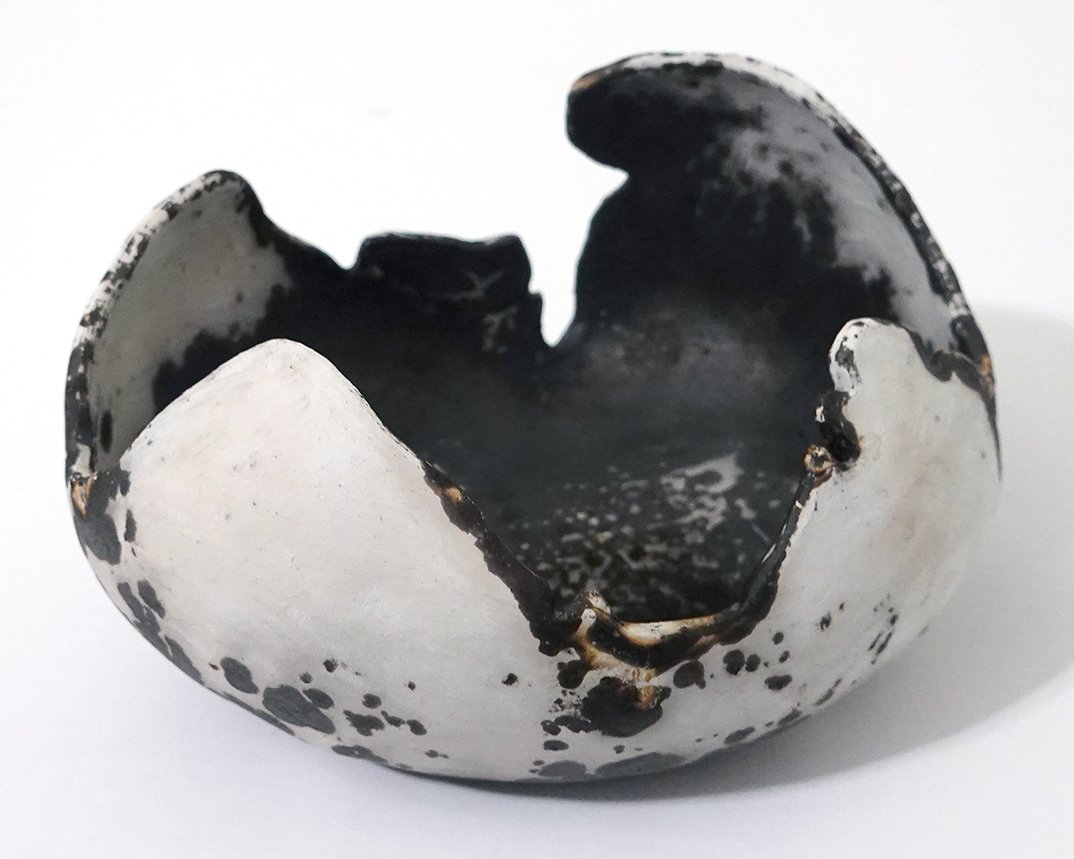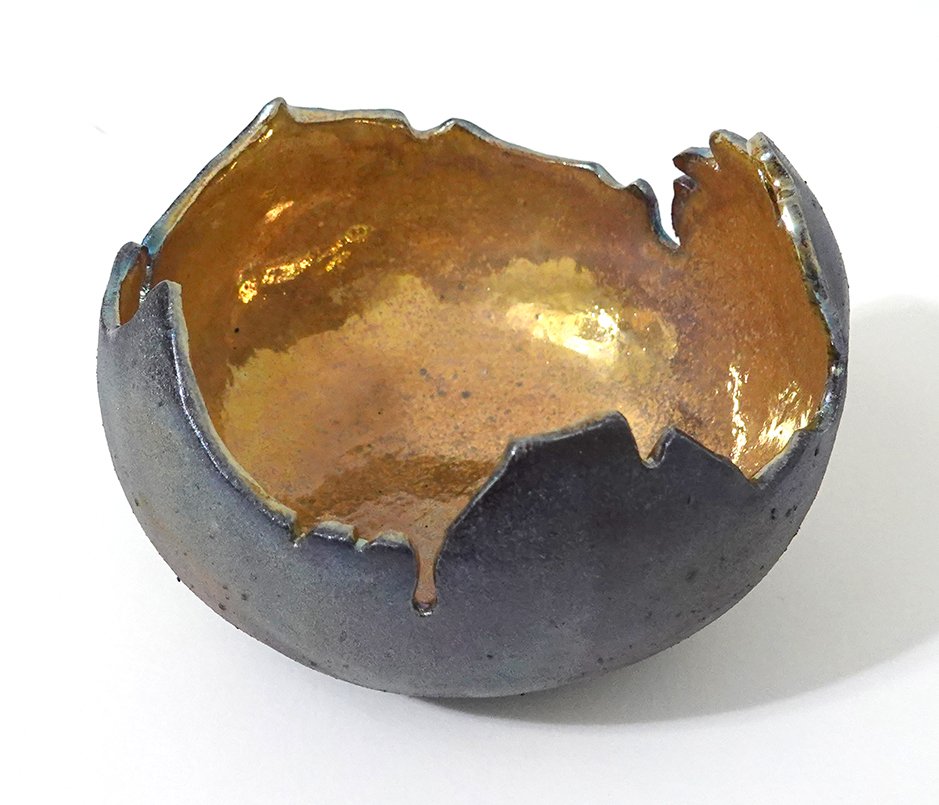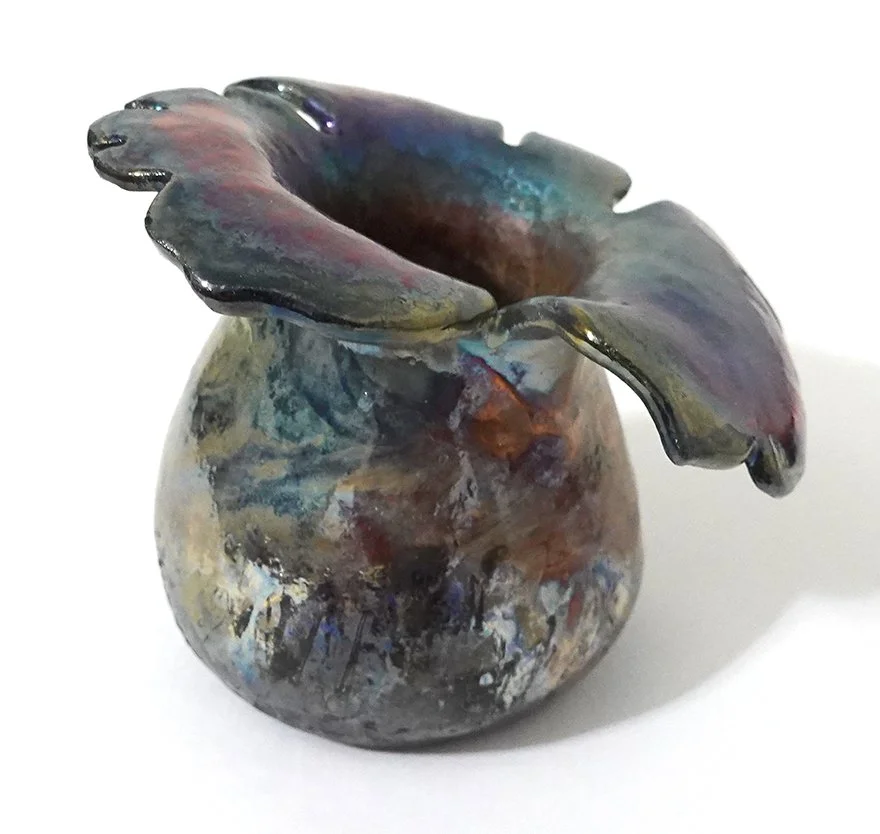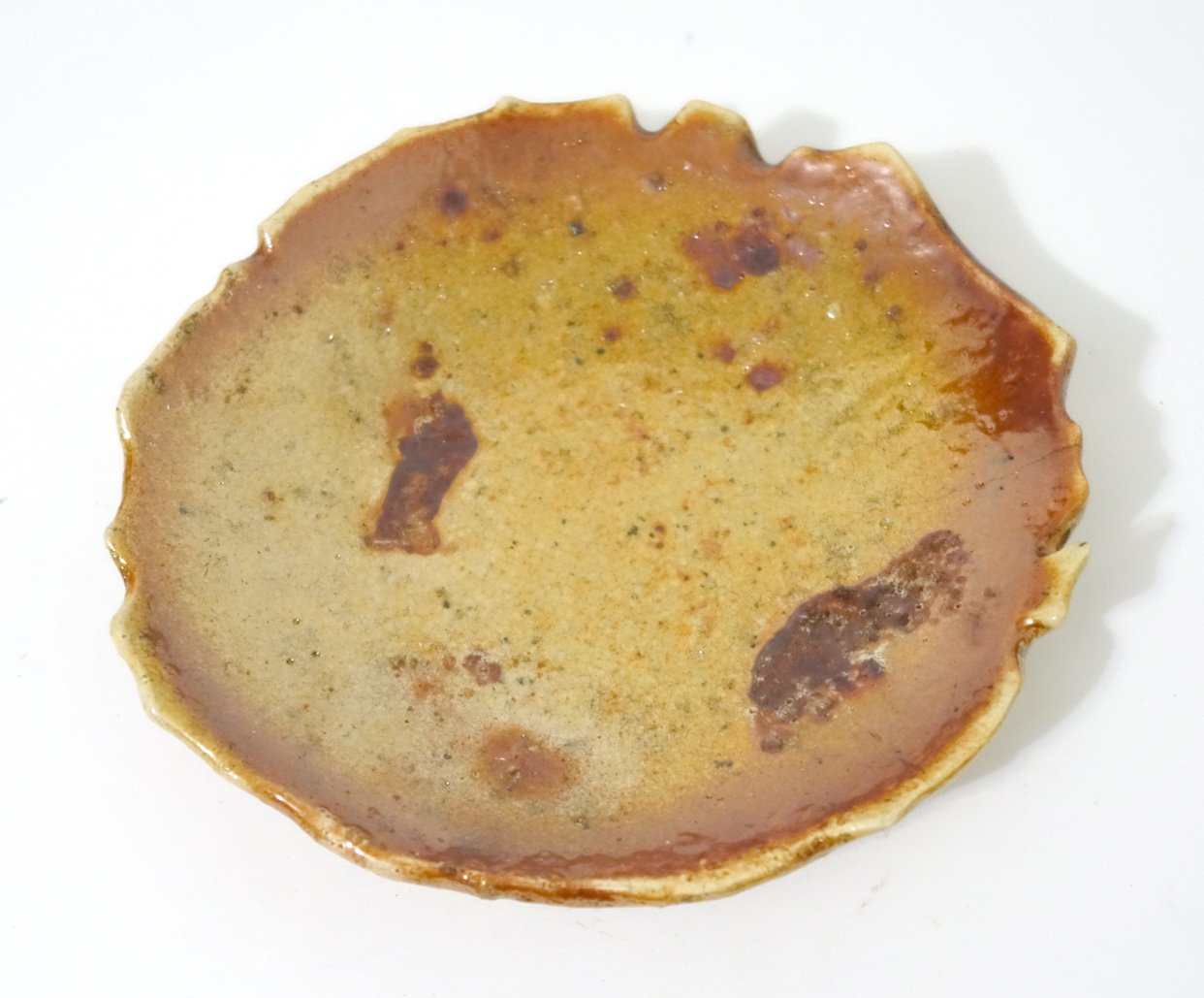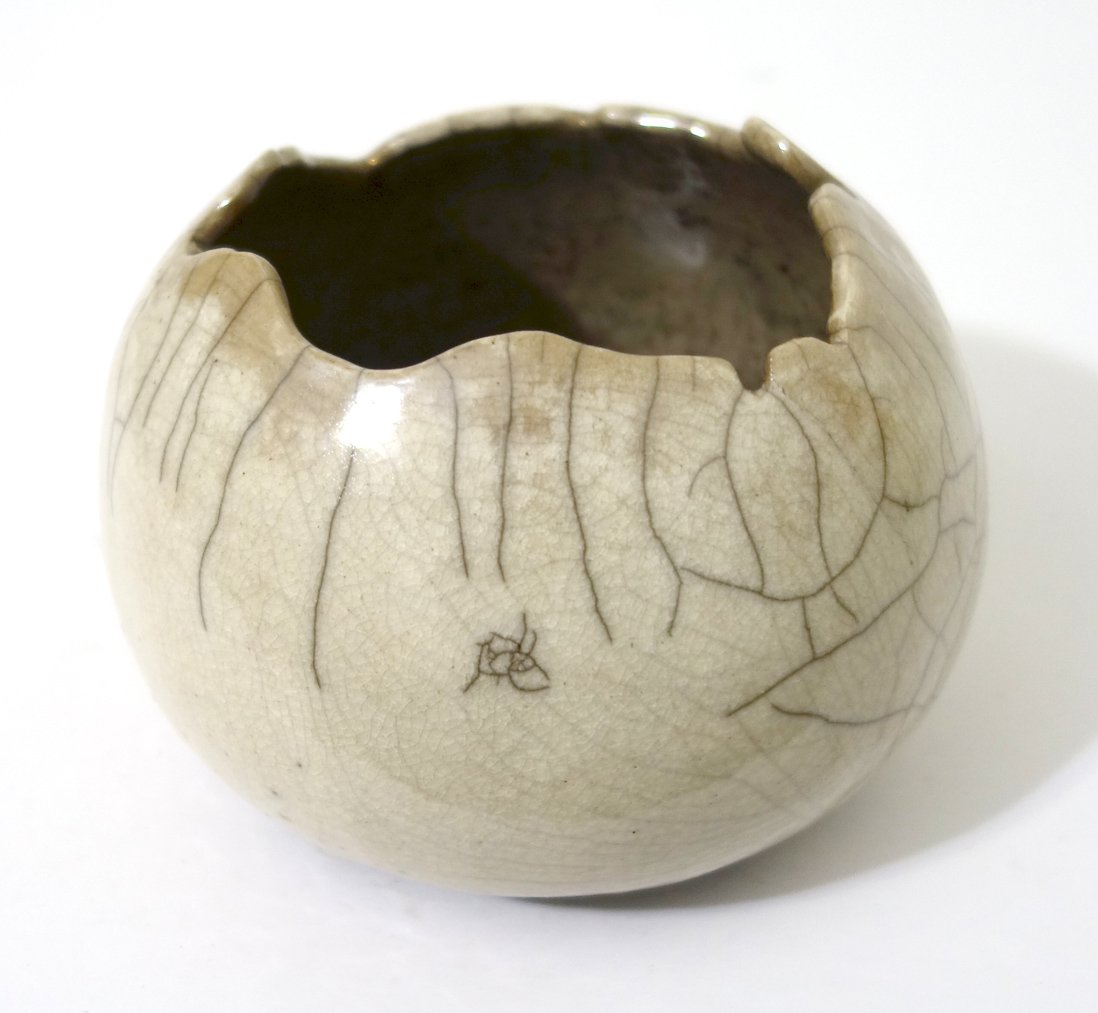I experimented one last time at the April 2025 workshop: I wanted to approximate pit firing, so I put a burnished bowl into an aluminum foil saggar along with a variety of combustibles including dried banana peel, coffee grounds, steel wool, and some metal salts.
Here is that bowl post-firing:
The metal salts didn’t really do much, but the rest of the colorants did produce a range of neutrals! I really liked this result and plan to do more in this vein in the future.































































